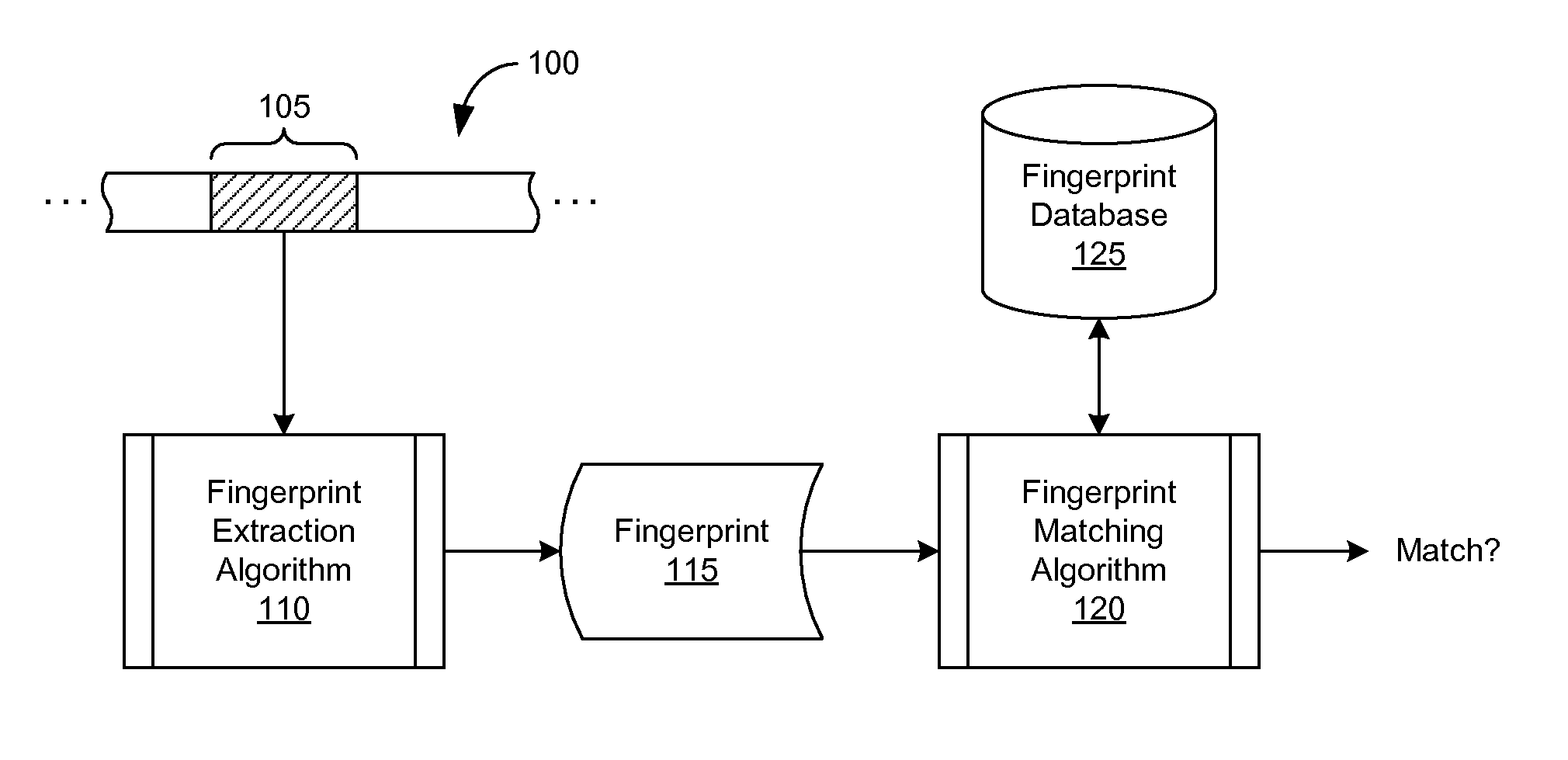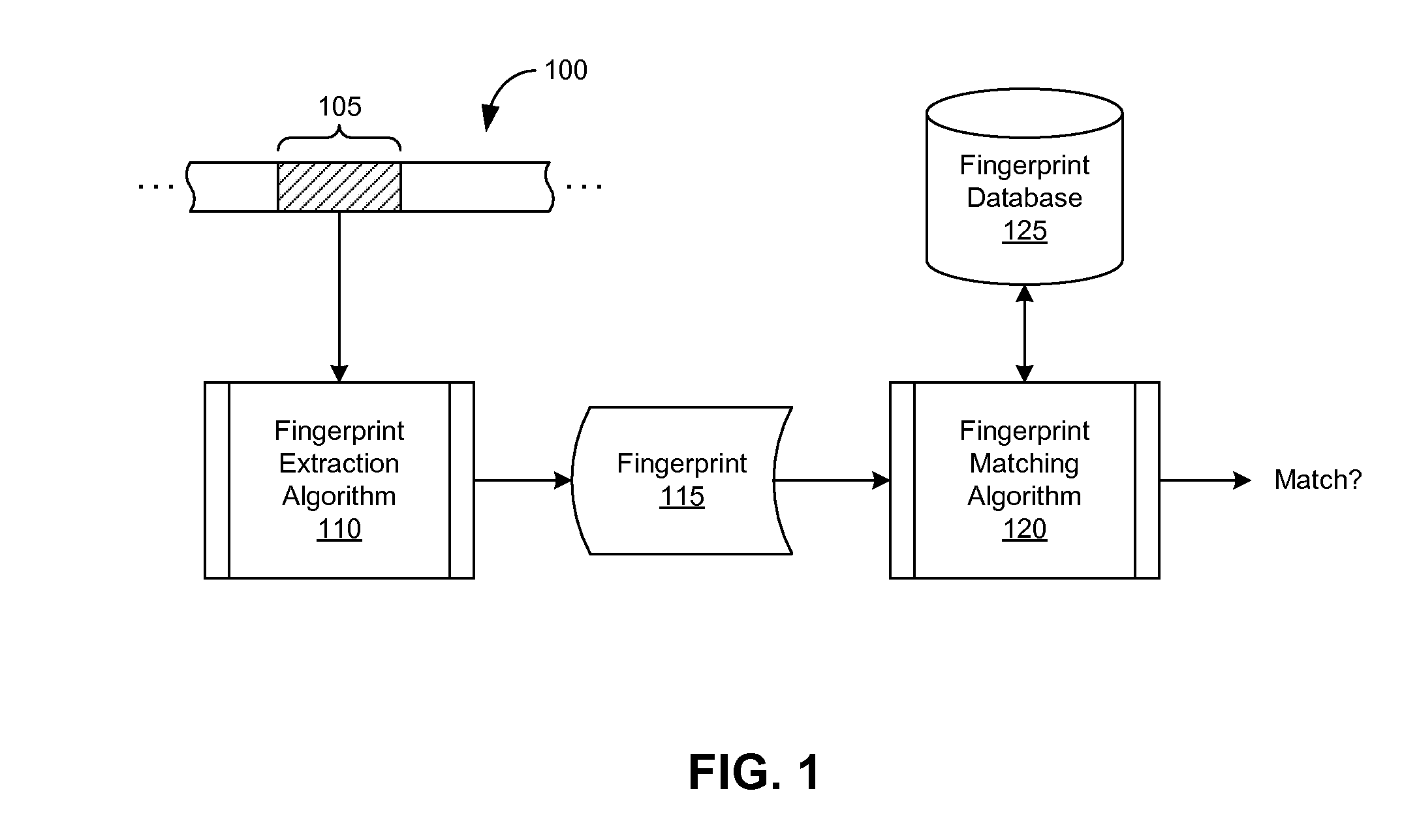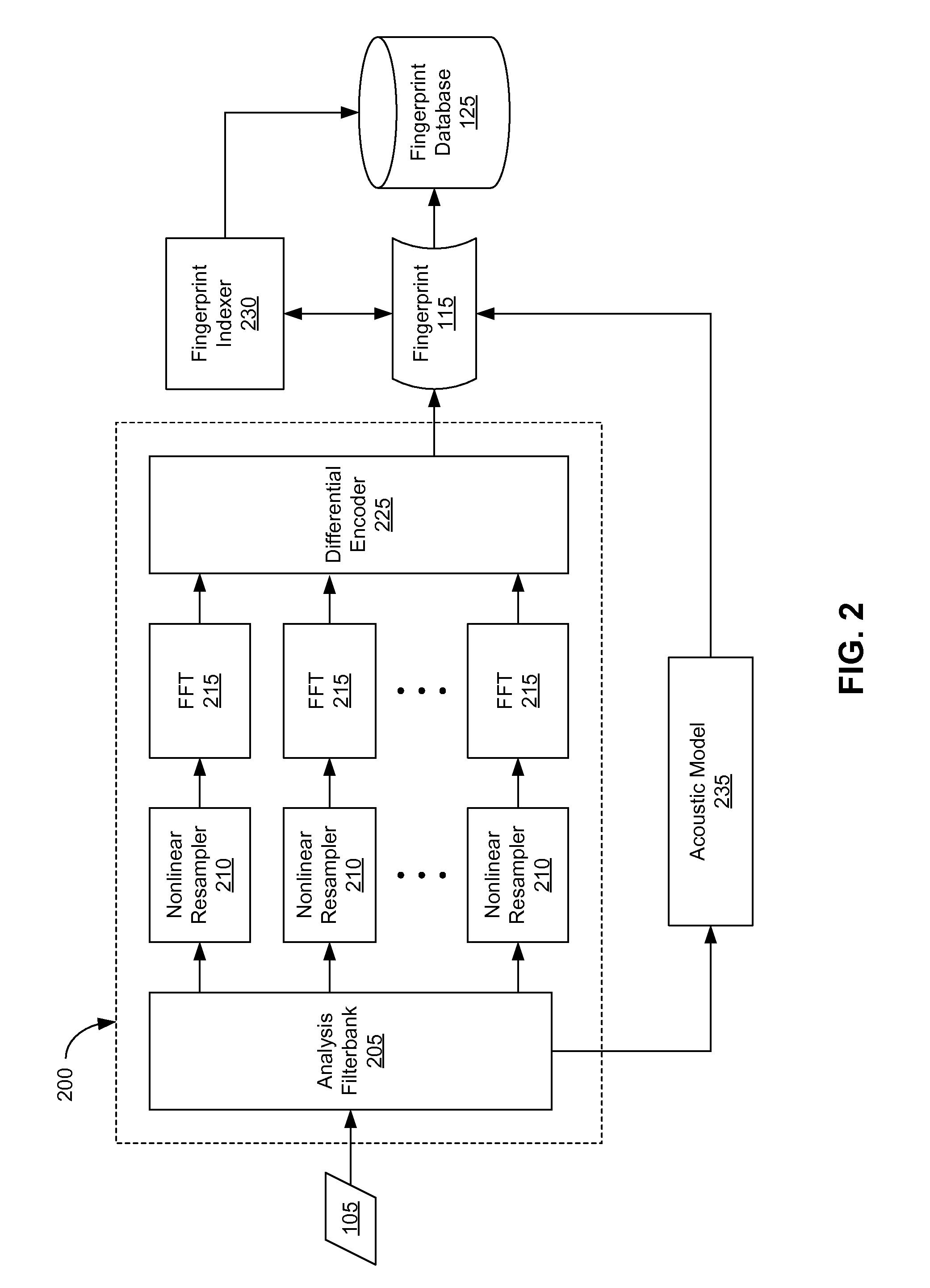Extraction and Matching of Characteristic Fingerprints from Audio Signals
a fingerprint and audio signal technology, applied in the field of audio signal processing, can solve the problems of affecting the recognition or comparison of file or signal recognition or other problems, affecting the accuracy of audio signals, etc., and achieves the effects of high accuracy, high accuracy, and high accuracy
- Summary
- Abstract
- Description
- Claims
- Application Information
AI Technical Summary
Benefits of technology
Problems solved by technology
Method used
Image
Examples
Embodiment Construction
Overview
[0027]Embodiments of the invention enable the extraction of characteristic information (e.g., an audio fingerprint) from a sample of audio as well as the matching or identification of the audio using that extracted characteristic information. As illustrated in FIG. 1, a frame 105 of audio taken from an audio sample 100 is input into a fingerprint extraction algorithm 110. The audio sample 100 may be provided by any of a wide variety of sources. Using the sequence of audio frames 105, the fingerprint extraction algorithm 110 generates one or more audio fingerprints 115 that are characteristic of the sequence. Serving as a distinguishing identifier, the audio fingerprint 115 provides information relating to the identity or other characteristics of the sequence of frames 105 of the audio sample 100. In particular, one or more fingerprints 115 for the audio sample 100 may allow the audio sample 100 to be uniquely identified. Embodiments of the fingerprint extraction algorithm 11...
PUM
 Login to View More
Login to View More Abstract
Description
Claims
Application Information
 Login to View More
Login to View More - R&D
- Intellectual Property
- Life Sciences
- Materials
- Tech Scout
- Unparalleled Data Quality
- Higher Quality Content
- 60% Fewer Hallucinations
Browse by: Latest US Patents, China's latest patents, Technical Efficacy Thesaurus, Application Domain, Technology Topic, Popular Technical Reports.
© 2025 PatSnap. All rights reserved.Legal|Privacy policy|Modern Slavery Act Transparency Statement|Sitemap|About US| Contact US: help@patsnap.com



